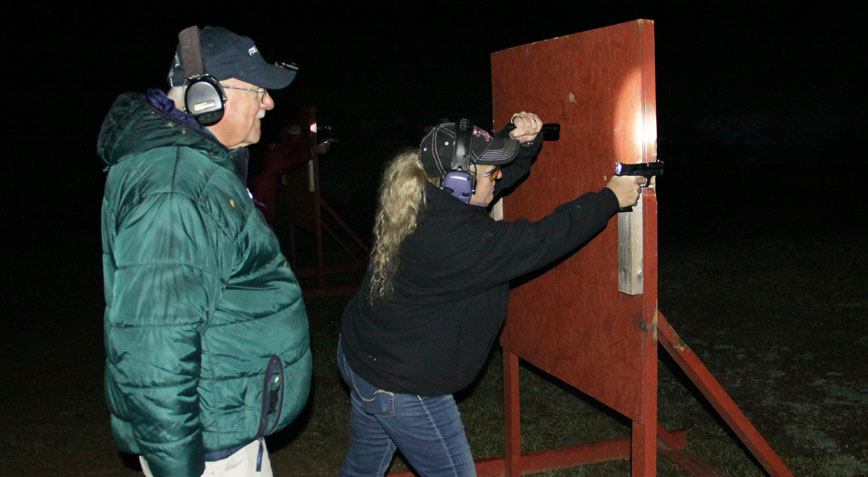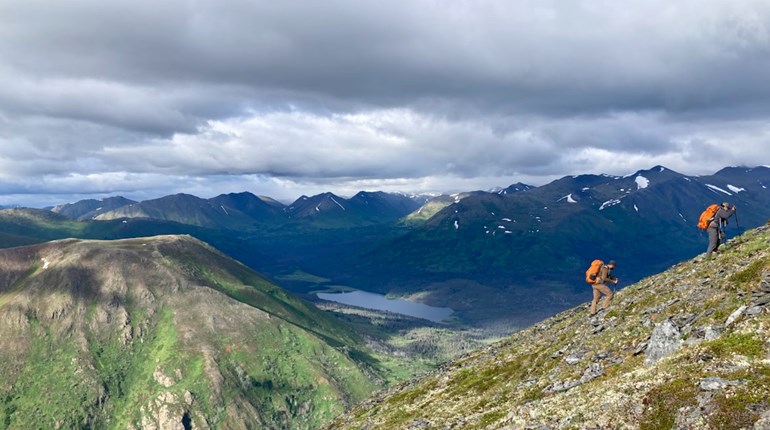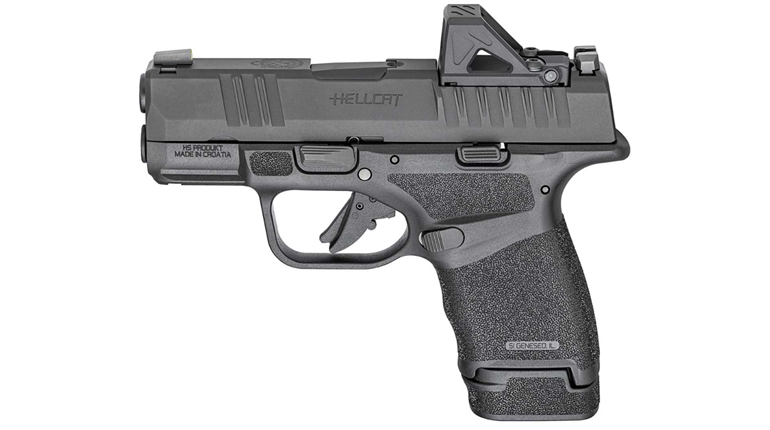
Have you ever fired your everyday-carry (EDC) handgun in low-light conditions? How about in total darkness? According to FBI statistics, if you are ever involved in a violent crime, the incident will likely take place at night or in a low-light situation.
Recently, I attended a low-light handgun training course in central Ohio offered by the Buckeye Firearms Association. Titled Low Light In/Around Structures, the outdoor class began at 1:00 p.m. and ended at 9:00 p.m., that specific eight-hour time period chosen by the instructors so that participants would begin shooting in full daylight and end shooting in full darkness—with and without the aid of a tactical flashlight.
The course was held at the East Group firearms training facility, usually open only to law enforcement and military personnel. A prerequisite was that participants possess a concealed-carry handgun license. The class consisted of 30 people, both men and women, ranging in ages from their 20s to 70s.
The instruction began with a 1.5-hour classroom session, as the head instructor, Sly, set the tone for the day. “There is a world of difference between handgun shooting and handgun fighting,” he began. “The training today will be as realistic as we can make it.”
Drawing a large triangle on a marker board, Sly stated that just as a triangle has three sides, handgun fighting has three basic elements. “It begins with a positive mindset,” he said. “You should have confidence enough in your firearms skills that you know you can win a gunfight if you are forced to engage in one.”
Second, he mentioned gun manipulation, which is knowing how to competently operate your firearm or “run the gun” as he termed it—loading, reloading, clearing obstructions, etc.—even in low-light conditions. And the third side of the triangle was marksmanship.
“If you can’t hit what you are shooting at, particularly under the amped-up pressure of a firefight, all your other training won’t do you much good,” Sly said. “And remember, all three sides of the triangle must be mastered because they work together.”
Upon moving outdoors, the first live-fire of the day was a 25-round assessment drill, which allowed the instructors to determine a participant’s skill level. Once that was completed, we began learning and practicing the five basic flashlight techniques or holds to use with a handgun: Harries, Surefire, Massad Ayoob, FBI and Neck.
“Learn to align three things,” instructor Jeff demonstrated, “your flashlight, eyes and gun. You’ll understand how important that concept is once it becomes dark.”
Next was shooting steel silhouette targets from behind barricades while experimenting with the five flashlight holds. The consensus of the class was that the Harries, FBI and Neck holds were the easiest to use and would likely be the most easily remembered and employed in a self-defense situation.
A shoot-house was the setting for the next segment of the class, where instructors described and walked us through the basics of clearing a house room by room using a flashlight and handgun. (That night we would return to the shoot-house for a live-fire exercise, with each student identifying and engaging two targets.)
Following a quick supper break it was time for the “test.” The sun had set and we returned to the range in the dark, prepared to apply the techniques we had been taught earlier in the day.
Shooting in the dark, I learned, is where the gun-manipulation side of the triangle becomes critical. If you don’t know how to operate and reload your handgun by feel, you’ll be severely behind the curve after dark, if not totally lost. I also discovered that the tritium night sights on my Smith & Wesson 9mm M&P Shield were invaluable in the dark. If I could see the target, I could align my sights and hit it, with or without the aid of a flashlight.
As for the choice of a tactical flashlight, Sly listed several things to keep in mind when purchasing one. “Buy a flashlight with a high-output beam of at least 100 lumens, with 200 or even 300 lumens being better,” he said. “The flashlight should have a tail cap on-and-off switch, as opposed to a side switch. It should also have a LED (Light-Emitting Diode) rather than an old-fashioned bulb, and be powered by disposable lithium batteries.”
As preplanning preparation against your primary light failing, Sly also stressed the importance of carrying more than one flashlight. How many should you carry? He used the following quip to make his point. “One is none, two is one, and three is key,” he said.
One of the people attending the low-light handgun training was Mary Petticord, age 22, who had taken the course before. “I’m taking it again because I’m on the security team at my church and I want the additional training to be better capable of handling a situation should one occur,” she said.
A father and his college-age son taking the course for the first time were Nick and Giovanni D’Angelo. Asked what he had learned during the day, the father said, “Everything gets more difficult after dark. You might be a decent handgun shot during the day when the sun is shining and the birds are chirpin’, but when the light goes down the wheels can fall off. I also learned that you don’t know what you don’t know.”
D’Angelo added the following important point. “Most shooters always want to buy another gun, but I believe it’s more important to seek additional training first. After all, you can only shoot one gun at a time…” There is some real wisdom in that.
During any advanced firearms training course a lot of information will be thrown at you in a short period of time and you’ll likely leave feeling a little overwhelmed, realizing how much you don’t know. But don’t let that discourage you. Instead, use the experience as motivation to take what you’ve learned and practice those techniques on your own until you’ve mastered them. Then seek further training.
By doing so, you’ll gradually become more proficient and confident in the use of your firearm. And, God forbid, should you one day need to use those skills in a life-and-death self-defense situation, you’ll be better prepared—even in the dark.







































